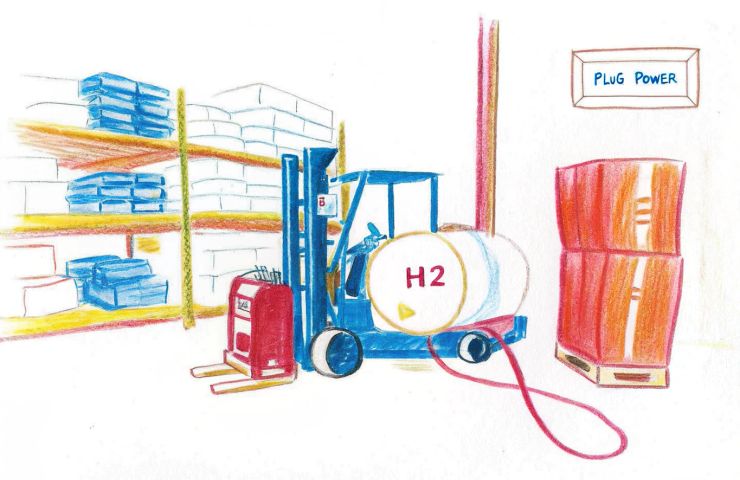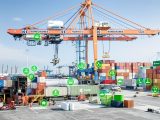
Hydrogen Fuel Cells Slash 400 Tons of CO₂ at Floor & Decor’s Washington Warehouse
October 24, 2025Picture this: your forklifts powered by nothing more than water vapor. It sounds like sci-fi, but at Floor & Decor’s sprawling Frederickson warehouse in Washington, it’s very real. On October 23, 2025, Plug Power Inc. flipped the switch on its GenDrive and GenFuel hydrogen fuel cell solutions—ushering in a bold new era of industrial decarbonization. The mission? Swap out clunky battery swaps and noisy diesel gensets for sleek hydrogen fuel cells that exhale only H₂O. Pallets keep moving, emissions stay in check, and big-box logistics gets a fresh taste of sustainable energy.
And here’s the eye-catcher: more than 400 metric tons of CO₂-equivalent emissions slashed every year. That figure comes straight from Plug’s press release and has been echoed by Nasdaq and StreetInsider. By tapping on-site hydrogen refueling via GenFuel and powering forklifts with GenDrive, Floor & Decor isn’t just boosting its ESG cred—it’s proving that hydrogen fuel cells can hum along non-stop, round the clock.
A New Chapter in Industrial Decarbonization
In a warehouse, downtime is public enemy number one. Traditional lead-acid batteries need hours to recharge or swap, and they lose punch over time. That’s where fuel cell technology shines: forklifts fuel up in minutes and sail through full shifts without a hitch. For Plug Power, Frederickson is more than a milestone—it’s proof that hydrogen is commercially mature as a zero-emission alternative. For Floor & Decor, it’s a practical way to shave Scope 1 emissions, a key metric for regulators and investors.
Inside the Hydrogen Ecosystem
At the heart of this setup are GenDrive and GenFuel. GenDrive is the on-truck hydrogen fuel cell system that swaps out heavy batteries for steady, consistent power. GenFuel is the behind-the-scenes workhorse: an on-site hydrogen hub that stores, delivers, and dispenses H₂ in under three minutes. Together, they form a mini hydrogen plant right on the warehouse floor—showcasing how modular hydrogen infrastructure slots smoothly into existing logistics hubs.
Running the GenFuel station is straightforward: compressed hydrogen tanks, a dispenser, and safety valves all tailored for busy warehouse life. The gas—kept at high pressure—flows through quick-connect hoses into each forklift. As the vehicles draw hydrogen, automated controls monitor pressure, temperature, and flow rates so you don’t have to lift a finger. Compared to diesel gensets that belch particulates or battery rooms that risk thermal events, hydrogen fuel cells sidestep these headaches, keeping air cleaner and operations smoother.
Ripples Beyond the Warehouse
This isn’t just a cool technology demo. Cutting 400 tons of CO₂e unlocks carbon credits in emerging markets and taps into state incentives. Local air quality perks up as diesel backups and idling forks fade into the past. Meanwhile, green hydrogen producers score a dependable, high-volume customer, justifying new production facilities and pipelines for renewable H₂.
Plug Power has been laying the groundwork for a while, partnering with giants like Amazon and Walmart. Each new deployment sharpens the business case. Service technicians trained on fuel cell stacks are in high demand—those battery-swap crews are now diving into diagnostics and module swaps. It’s less grunt work and more tech know-how, which is a win for warehouse teams. Plus, every installation feeds data into Plug Power’s analytics engine, boosting uptime and refining costs for the next site.
Looking Ahead
Federal and state incentives—from the U.S. hydrogen production tax credit to Washington’s clean fuels standard—sweeten the deal for early adopters. As electrolyzers get cheaper and more renewable electricity comes online, green hydrogen costs should tumble. That’s the tipping point: today, green H₂ can still be pricier than grid power or diesel in some regions. But by decade’s end, estimates suggest fuel cell forklifts could rival—or even beat—battery electrics on total cost of ownership.
For logistics operators, the message is clear: hydrogen fuel cells can be a savvy hedge against battery constraints, especially in high-throughput or multi-shift operations. Even if your fleet’s mostly electric now, adding hydrogen diversifies your energy portfolio. And in markets where zero-emission tech affects permits, taxes, or grid access, being an early bird really pays off.
Frederickson’s rollout also serves as a blueprint for others. Imagine warehouse clusters sharing a single hydrogen station, or mixing forklifts, yard tractors, and off-road vehicles at one fuel dock. As hydrogen corridors link distribution hubs, big rigs might one day top off at the same station their warehouse forklifts use. We’re not quite there yet, but projects like Floor & Decor’s bring that future into focus.
Sure, challenges remain—from scaling electrolyzer capacity to building out transport networks—but real-world examples are piling up. Seeing warehouses hum with fuel cell technology instead of battery rooms or diesel backups shows that hydrogen infrastructure can deliver on its promise. For companies chasing sustainable energy goals, here’s your invite: pick a pallet mover, track your stats, and join the race to net zero.



 With over 15 years of reporting hydrogen news, we are your premier source for the latest updates and insights in hydrogen and renewable energy.
With over 15 years of reporting hydrogen news, we are your premier source for the latest updates and insights in hydrogen and renewable energy.